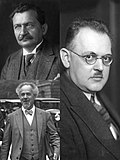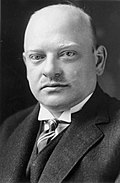| |||||||||||||||||||||||||||||||||||||||||||||||||||||||||||||||||||||||||||||||||||||
All 491 seats in the Reichstag 246 seats needed for a majority | |||||||||||||||||||||||||||||||||||||||||||||||||||||||||||||||||||||||||||||||||||||
|---|---|---|---|---|---|---|---|---|---|---|---|---|---|---|---|---|---|---|---|---|---|---|---|---|---|---|---|---|---|---|---|---|---|---|---|---|---|---|---|---|---|---|---|---|---|---|---|---|---|---|---|---|---|---|---|---|---|---|---|---|---|---|---|---|---|---|---|---|---|---|---|---|---|---|---|---|---|---|---|---|---|---|---|---|---|
| Registered | 41,224,678 ( | ||||||||||||||||||||||||||||||||||||||||||||||||||||||||||||||||||||||||||||||||||||
| Turnout | 75.6% ( | ||||||||||||||||||||||||||||||||||||||||||||||||||||||||||||||||||||||||||||||||||||
| |||||||||||||||||||||||||||||||||||||||||||||||||||||||||||||||||||||||||||||||||||||
 Results by electoral constituency
Results by electoral constituency  Results by district and independent city
Results by district and independent city  Results for each party
Results for each party | |||||||||||||||||||||||||||||||||||||||||||||||||||||||||||||||||||||||||||||||||||||
| |||||||||||||||||||||||||||||||||||||||||||||||||||||||||||||||||||||||||||||||||||||
| This article is part of a series on the |
| Politics of Germany |
|---|
 |
| Constitution (Basic Law) |
| Head of State |
|
Executive
|
|
Legislature
|
Judiciary
|
|
Subdivisions
|
Elections
|
State and local politics
|
Foreign relations
|
|
Political ideologies
|
Federal elections were held in Germany on 20 May 1928 to elect the fourth Reichstag of the Weimar Republic.
The previous three and a half years had seen Germany governed by a series of conservative cabinets, variably including the radical nationalist German National People's Party (DNVP). The fourth Marx cabinet collapsed in February 1928 due to a dispute over education policy, with new elections called for May. The results were a defeat for the parties of the centre-right cabinet: the DNVP particularly suffered, falling to 14%, as did the conservative German People's Party (DVP) and German Democratic Party (DDP). The Catholic Centre Party saw a substantial decline in its support for the first time since 1920. The winners of the election were the parties of the left: the Social Democratic Party, in opposition since 1923, won 30% of the vote. The Communist Party also improved to 10.6%. Much of the bourgeois and conservative electorate turned to small splinter parties representing special interests, including the Economic Party, Landvolk Party, and Revaluation Party.
With a strong left-wing and the splintered right, there was little alternative to a government led by the SPD. Social Democrat Hermann Müller, who had previously served as Chancellor briefly in 1920, was charged with forming a new cabinet. The only viable majority was a Great Coalition stretching from the SPD to the DVP. Negotiations proved difficult: it took two weeks for the cabinet to be formed and sworn in, and only as a "cabinet of personalities" rather than a formal coalition, comprising ministers from the SPD, DVP, DDP, and Bavarian People's Party (BVP). The Centre sent only one minister, Theodor von Guérard, as a so-called "observer". It took until ten months later in April 1929 for a coalition agreement to be signed and the Centre to officially enter cabinet.
This second Müller cabinet was to be the final democratic government of the Weimar Republic. Its fall in March 1930 and marked the end of the parliamentary system and the beginning of the presidential cabinets.
Electoral system
The Reichstag was elected via party list proportional representation. For this purpose, the country was divided into 35 multi-member electoral districts. A party was entitled to a seat for every 60,000 votes won. This was calculated via a three-step process on the constituency level, an intermediary level which combined multiple constituencies, and finally nationwide, where all parties' excess votes were combined. In the third nationwide step, parties could not be awarded more seats than they had already won on the two lower constituency levels. Due to the fixed number of votes per seat, the size of the Reichstag fluctuated between elections based on the number of voters and turnout. The voting age was 25 years.
Results
 | ||||||
|---|---|---|---|---|---|---|
| Party | Votes | % | +/– | Seats | +/– | |
| Social Democratic Party | 9,152,979 | 29.76 | +3.74 | 153 | +22 | |
| German National People's Party | 4,381,563 | 14.25 | −6.24 | 73 | −30 | |
| Centre Party | 3,712,152 | 12.07 | −1.53 | 61 | −8 | |
| Communist Party of Germany | 3,264,793 | 10.62 | +1.68 | 54 | +9 | |
| German People's Party | 2,679,703 | 8.71 | −1.36 | 45 | −6 | |
| German Democratic Party | 1,479,374 | 4.81 | −1.53 | 25 | −7 | |
| Reich Party of the German Middle Class | 1,387,602 | 4.51 | +2.22 | 23 | +11 | |
| Bavarian People's Party | 945,644 | 3.07 | −0.67 | 17 | −2 | |
| Nazi Party | 810,127 | 2.63 | −0.37 | 12 | −2 | |
| Christian-National Peasants' and Farmers' Party | 571,891 | 1.86 | New | 9 | New | |
| Reich Party for Civil Rights and Deflation | 509,471 | 1.66 | New | 2 | New | |
| German Farmers' Party | 481,254 | 1.56 | New | 8 | New | |
| Völkisch-National Bloc | 266,370 | 0.87 | New | 0 | New | |
| Agricultural League | 199,548 | 0.65 | −1.00 | 3 | −5 | |
| German-Hanoverian Party | 195,555 | 0.64 | −0.22 | 4 | 0 | |
| Saxon Peasants | 127,700 | 0.42 | New | 2 | New | |
| Christian Social Reich Party | 110,704 | 0.36 | New | 0 | New | |
| Left Communists | 80,405 | 0.26 | New | 0 | New | |
| Old Social Democratic Party of Germany | 65,775 | 0.21 | New | 0 | New | |
| Polish People's Party | 64,753 | 0.21 | −0.06 | 0 | 0 | |
| Evangelical Party of Germany | 52,488 | 0.17 | New | 0 | New | |
| German Social Party | 46,047 | 0.15 | −0.38 | 0 | 0 | |
| General People's Party | 37,373 | 0.12 | New | 0 | New | |
| German House and Property Owners' Party | 35,846 | 0.12 | New | 0 | New | |
| Independent Social Democratic Party | 20,815 | 0.07 | −0.26 | 0 | 0 | |
| Evangelical Community Spirit | 10,709 | 0.03 | New | 0 | New | |
| Christian National Middle Class Party | 9,957 | 0.03 | New | 0 | New | |
| Pastor Greber Party | 9,527 | 0.03 | New | 0 | New | |
| Revaluation and Construction Party | 8,562 | 0.03 | New | 0 | New | |
| German Reich Bloc of the Injured | 7,437 | 0.02 | New | 0 | New | |
| Reich Party for Crafts, Trade and Business | 6,614 | 0.02 | New | 0 | New | |
| People's Welfare Party | 6,071 | 0.02 | New | 0 | New | |
| Franconian Peasants | 3,417 | 0.01 | New | 0 | New | |
| Wendish People's Party | 3,111 | 0.01 | −0.01 | 0 | 0 | |
| Party for Justice and Tenant Protection | 2,831 | 0.01 | New | 0 | New | |
| Schleswig Club | 2,435 | 0.01 | −0.01 | 0 | 0 | |
| German Christian Folk Party | 901 | 0.00 | New | 0 | New | |
| Vital Interests of the Unmarried | 873 | 0.00 | New | 0 | New | |
| Masurian People's Party | 295 | 0.00 | New | 0 | New | |
| Lithuanian People's Party | 289 | 0.00 | New | 0 | New | |
| Friesland | 286 | 0.00 | New | 0 | New | |
| Total | 30,753,247 | 100.00 | – | 491 | –2 | |
| Valid votes | 30,753,247 | 98.68 | ||||
| Invalid/blank votes | 412,542 | 1.32 | ||||
| Total votes | 31,165,789 | 100.00 | ||||
| Registered voters/turnout | 41,224,678 | 75.60 | ||||
| Source: Gonschior.de | ||||||
See also
References
- Dieter Nohlen & Philip Stöver (2010) Elections in Europe: A data handbook, p762 ISBN 978-3-8329-5609-7
- Pollock 1928.
- ^ Kolb, Eberhard (2004). The Weimar Republic. Translated by Falla, P. S.; Park, R. J. New York City: Routledge. p. 79-80. ISBN 0415344417.
- Aleskerov, F.; Holler, M.J.; Kamalova, R. (21 February 2013). "Power distribution in the Weimar Reichstag in 1919–1933". Annals of Operations Research. 215 (April 2014): 25–37. doi:10.1007/s10479-013-1325-4.
Works cited
- Childers, Thomas (1983). The Nazi Voter: The Social Foundations of Fascism in Germany, 1919-1933. University of North Carolina Press. ISBN 0807815705.
- Hamilton, Richard (1982). Who Voted for Hitler?. Princeton University Press. ISBN 0691093954.
- Orlow, Dietrich (1969). The History of the Nazi Party: 1919-1933. University of Pittsburgh Press. SBN 822931834.
- Pollock, James (1928). "The German Elections of 1928". American Political Science Review. 22 (3). American Political Science Association: 698–705. doi:10.2307/1945624. JSTOR 1945624.
| Parliamentary elections | |
|---|---|
| Presidential elections | |
| European elections | |
| Referendums | |
| |





